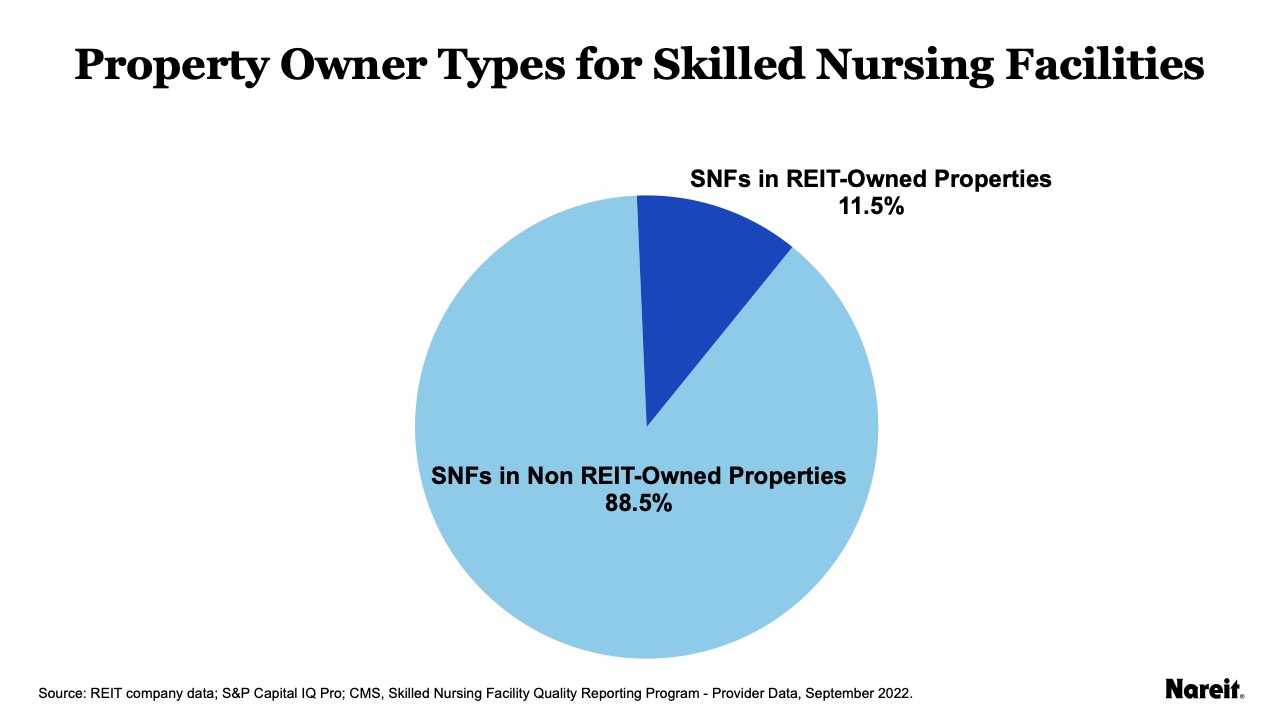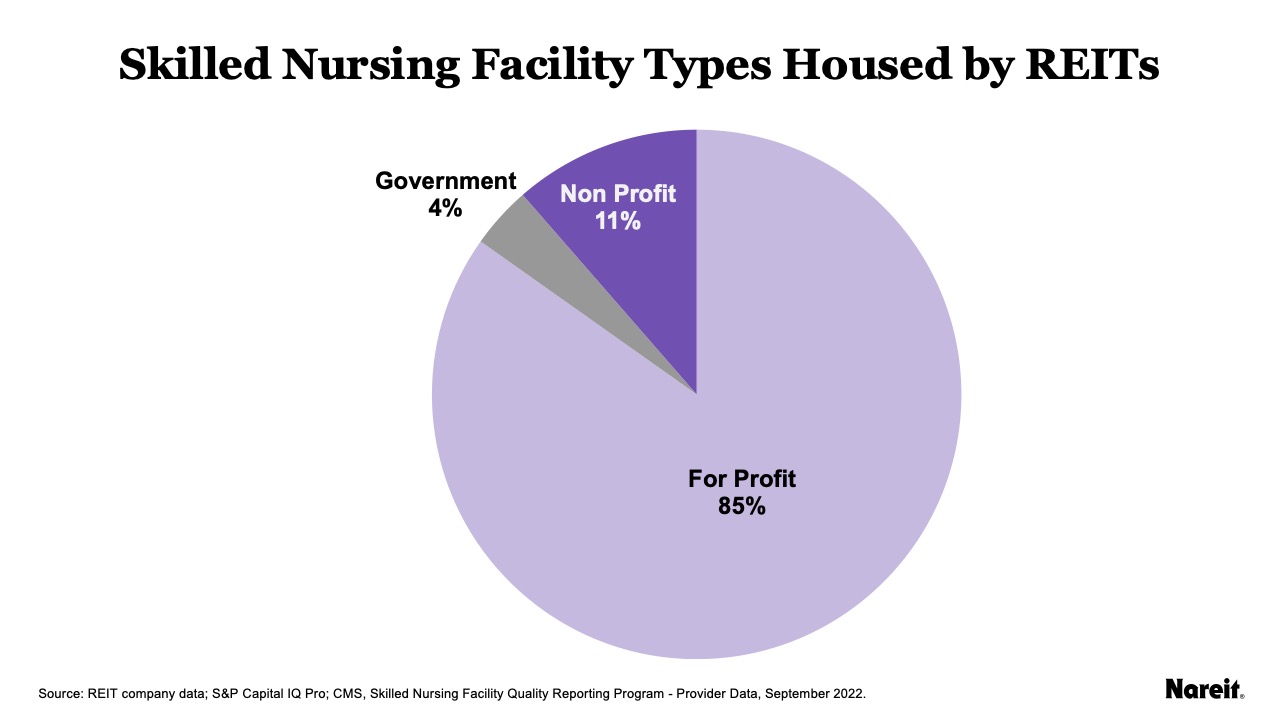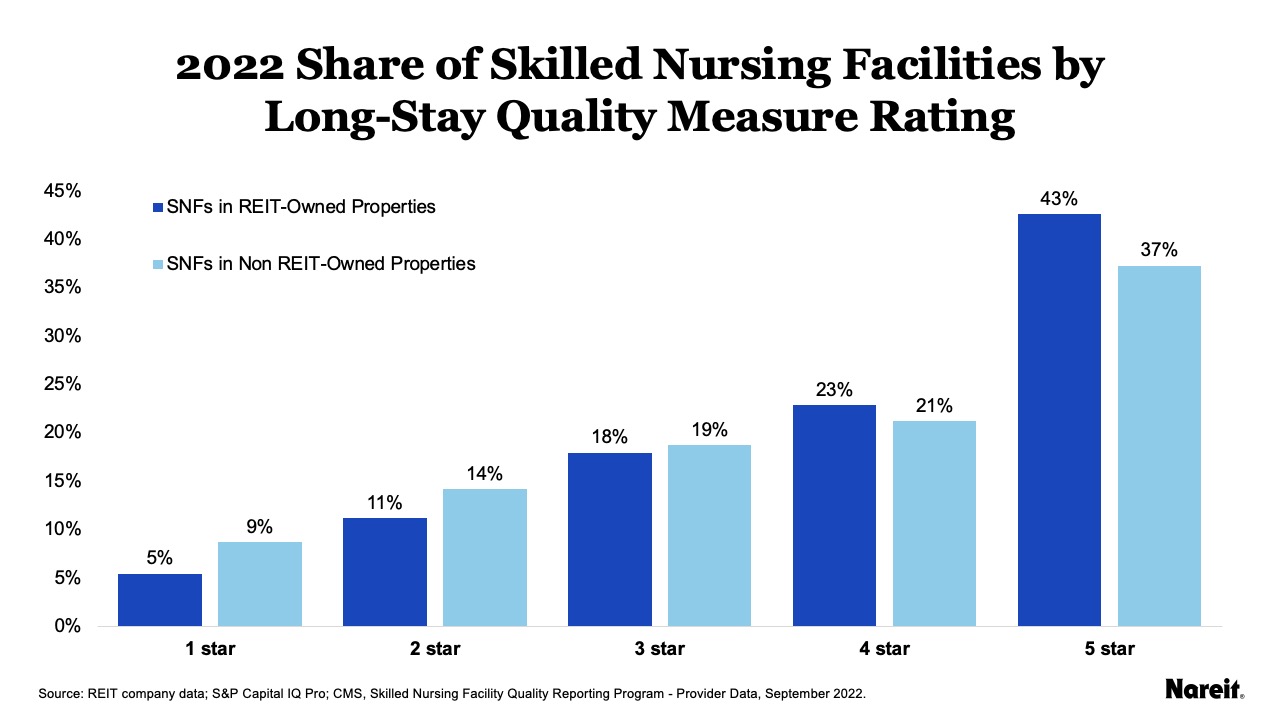Skilled nursing facilities (SNFs) that are housed in properties leased from REITs tend to have better quality measures and ratings compared with those that rent non-REIT properties or own their buildings. Nareit analysis of the Centers for Medicare and Medicaid Services (CMS) long-stay quality measure ratings and the seven underlying quality measures shows that SNF providers leasing from REITs tend to have more four- and five-star long-stay quality measure ratings and a smaller share of residents with negative quality outcomes.
Nareit matched property address information from 18 publicly offered REITs to 1,744 skilled nursing facilities identified in the September 2022 Skilled Nursing Facility Quality Reporting Program database from CMS. For the 2022 reporting year, this represented 11.5% of SNFs in the database. For the remaining 88.5%, separate research by the National Investment Center for Seniors Housing & Care (NIC), shows that the majority (67.2%) of units in SNFs are housed in properties owned by private, for-profit entities.
CMS tracks different types of SNFs offering care. For the SNFs housed in REIT-owned properties, 85% were for-profit companies, 11% were nonprofits, and 4% were government facilities.
The CMS uses seven quality metrics for long-stay residents to determine a composite long-stay quality measure from one to five stars for each SNF measured in that cycle. The distribution by quality stars of the long-stay quality measures for SNF providers housed in REIT and non-REIT properties is shown in the chart above. For long-stay residents, REIT-owned properties house a higher share of four- and five-star SNF providers than the general population (65% compared to 58%) and a lower share of one- and two-star SNFs (17% compared to 23%) in 2022.
Looking across years in the table above, SNFs in REIT-owned properties have higher average long-stay quality measure ratings in 2020, 2021, and 2022. These average differences are statistically significant. From 2020 to 2022, controlling for state and year, SNFs in REIT-owned properties have average long-stay quality measures ratings that are 0.16 higher.
The long-stay quality rating is comprised of seven measures. Each measure is the percentage of long-stay residents experiencing a negative outcome:
- receiving antipsychotic medication,
- having a catheter left in their bladders,
- experiencing one or more falls with a major injury,
- needing increased help with daily activities,
- having decreased ability to move independently,
- experiencing pressure ulcers, and
- experiencing urinary tract infections.
The table above shows the averages across SNFs in non REIT-owned properties or REIT-owned properties for the seven long-stay quality measures. The largest difference is in percentage of long-stay residents receiving an antipsychotic medication at 2.1 percentage points better for SNFs in REIT properties. This difference is statistically significant at the 1% level. The remaining differences are all less than one percentage point. For help with daily activities, ability to move independently, and experiencing pressure ulcers, the differences were less than 20 basis points, and none were statistically significant.
The evidence suggests that long-stay residents at SNFs housed in REIT-owned properties experience no worse quality outcomes than those living in SNFs at non-REIT owned properties—and may even benefit from a higher quality of care.




